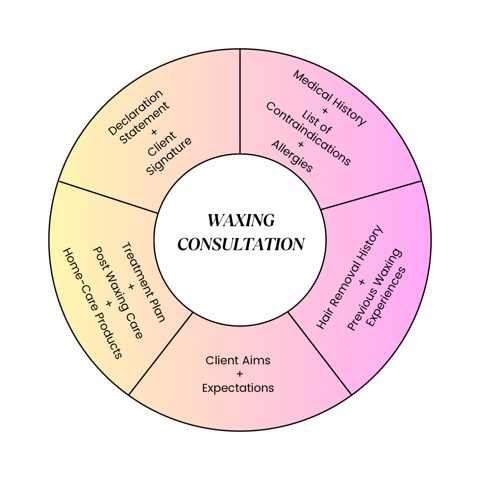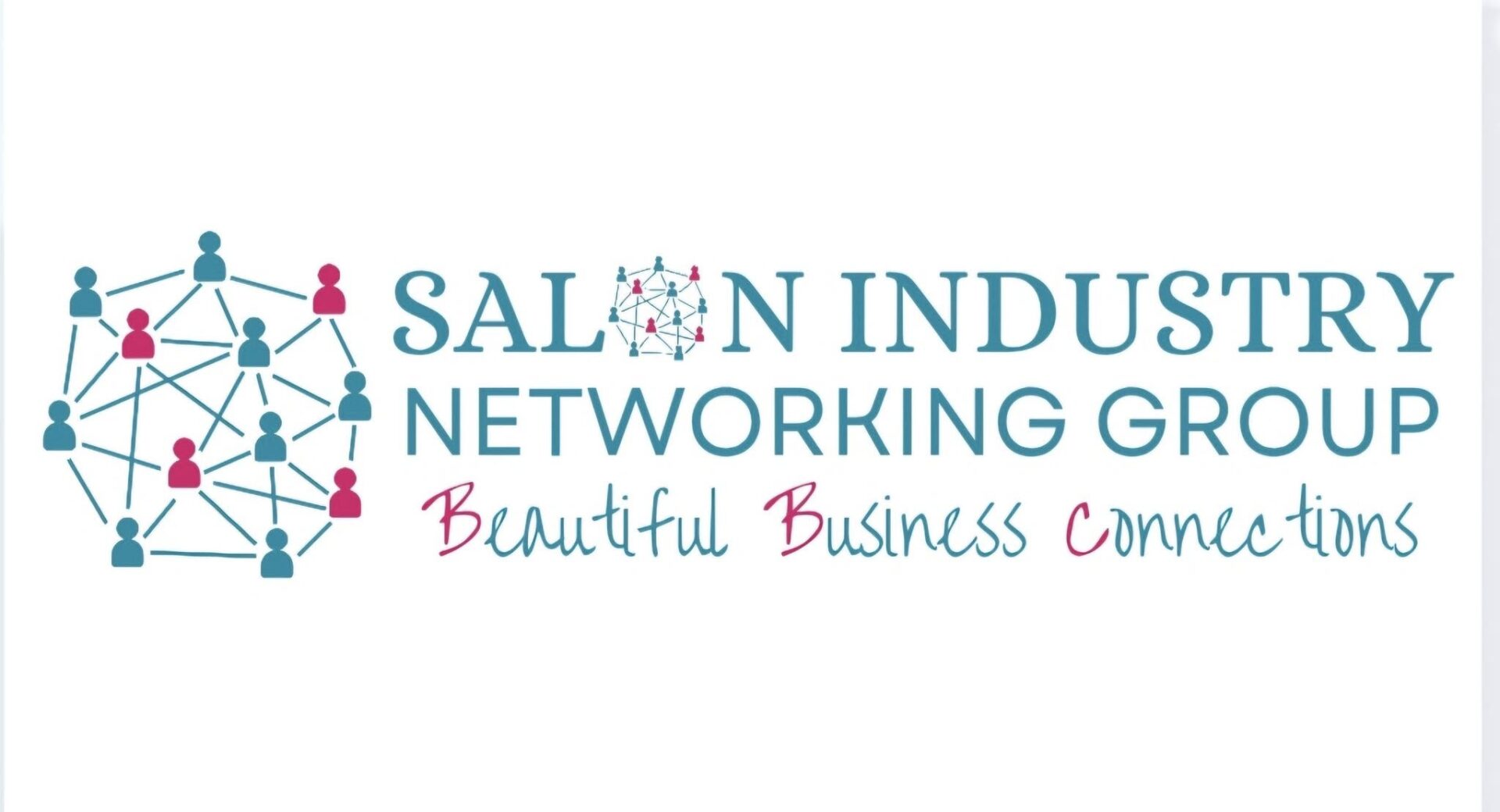Waxing Consultation - The Key To Client Retention & Business Success
A comprehensive waxing consultation process plays a vital role in providing exceptional experiences for clients. In this article, I will dive into the significance of waxing consultation, examining how it guarantees client satisfaction, ensures safety, and contributes to the success of your career and business. By understanding the logic behind introducing waxing consultations, you can create a win-win situation for yourself and your clientele.
Beauty professionals who offer facials understand the importance of conducting a comprehensive skin analysis before proceeding with any treatment. This analysis allows them to comprehend their clients’ specific skin concerns, identify underlying issues, and create a personalised treatment plan to address their needs. By doing so, they can offer appropriate guidance to improve their clients’ skin health.
Similarly, waxing involves working directly on the client’s skin and carries inherent risks that must be approached with caution. Therefore, conducting a thorough consultation prior to waxing is crucial. This consultation helps identify allergies, contraindications, and skin sensitivities that may heighten the risk of adverse reactions or injury. Additionally, it enables the assessment of the client’s expectations and provides suitable advice on aftercare to minimise discomfort or complications. With the rise of clients using retinol and the common incidence of skin lifting as a result, I just can’t imagine anyone taking the risk of performing facial waxing without conducting an in-depth consultation first.
Having received training in Poland, where the beauty industry is regulated and closely monitored, I developed a strong sense of responsibility in treating my clients in accordance with the legislation. However, it is important to note that the beauty industry in the United Kingdom is not regulated. Despite this, all beauty professionals should prioritise client safety and well-being by implementing consultations as a standard practice. Doing so demonstrates professionalism, care, and a commitment to delivering high-quality services whilst minimising risks and ensuring client satisfaction. By having clients sign a declaration form, we further reinforce their informed consent and provide enhanced legal protection for all parties involved.

Build Your Reputation
The waxing consultation is not just a form to fill in; it’s a whole process that can help you position yourself as an expert in your clients’ eyes. It serves as a marketing tool and helps you hook your clients, ensuring they come back to you. Consultations offer valuable marketing opportunities and help build strong client relationships. During the consultation, you have the chance to understand clients on a deeper level, establishing rapport and trust. This opens doors to offering personalised packages and retail products that enhance the overall waxing experience. Specialised consultations, such as a waxing consultation for pregnant clients or facial waxing will address specific needs and demonstrates a commitment to client satisfaction.
By showcasing professionalism and expertise during consultations, you can really impress clients and foster long-term relationships.
What should the Waxing Consultation include?
In my diagram, I have included the fundamental components that your consultation form and process should encompass.
To enhance the consultation process, I suggest including a notes section where you can record important details about the client. This section can be used to note their preferences, specific requests, preferred pronouns, and how they would like to be addressed. It’s also helpful to note any specific considerations, such as if the client prefers to keep their underwear on, wants to exclude the buttocks (during intimate waxing), or if they have any existing mobility problems.
Additionally, recording information about menopause or any other relevant health conditions can help tailor the treatment to their specific needs. It’s worth noting that some clients find chatting during the treatment relaxing, while others prefer to remain silent.
By keeping these notes, you can provide a truly personalised experience for each client. This attention to detail sets you apart from the crowd and demonstrates your commitment to meeting the unique needs and preferences of your clients.
The Follow-up
Consistent follow-up questions during subsequent visits and updating client records are crucial, especially when there have been changes in medication or extended absences, it demonstrates a dedication to client safety and satisfaction. By maintaining thorough consultation practices, you minimise the likelihood of problems arising in the future and leaves a positive impression on clients.
Let’s explore the various types of consultations that can make your salon visit truly remarkable
Paper Consultation Form followed by Verbal Consultation: This classic approach involves filling out a paper form, which personally remains my favourite method. It provides an opportunity for a deeper connection and allows for close collaboration with your client.
Digital Consultations: Clients can receive a consultation form via email, offering a hassle-free way to communicate their desires and ensure a seamless salon experience. However, there is a slight risk of mistakes and lost data. Alternatively, the digital consultation can be conducted using an Electronic Consultation on an iPad while the client is at the salon.
Phone Consultation: A convenient option is to have a call with your client before their visit. However, remember to document all the information and have them confirm it to avoid any misunderstandings.
Zoom/Skype Consultation: These online consultations provide the benefits of face-to-face interaction, almost like having a salon experience remotely. Like phone consultations, it’s important to follow up and have any necessary documents signed.
Whether you opt for a traditional paper consultation, a tech-savvy digital approach, or a virtual Zoom call, these consultations ensure that your salon visit is a truly personalised and memorable experience.
What are the risks of not carrying out consultation?
Consultations allow for proper assessment, risk identification, and customised care, ensuring the client’s safety, satisfaction, and well-being. By neglecting the consultation process in waxing, we risk overlooking critical information that could impact the client’s safety.
Several potential threats may arise which can include:
· Physical harm: Without a consultation, we may lack important information about the client’s allergies, or any pre-existing conditions that could increase the risk of adverse reactions. As a result, the client may experience burns, skin irritation, or other physical harm from the waxing treatment.
· Allergic reactions: Some individuals may have allergies or sensitivities to certain waxing products or ingredients. Without a consultation to identify and discuss these potential concerns, we may unknowingly use a product that triggers an allergic reaction in the client, leading to discomfort, redness, swelling, or other more serious allergic symptoms.
· Inadequate treatment: A consultation allows us to assess the client’s specific needs and customise the treatment accordingly. Without this vital step, we may not properly address the client’s desired results. This could result in an ineffective or unsatisfactory treatment outcome.
· Legal and professional consequences: If the client sustains significant harm or injury from the treatment, they may seek legal recourse. We could face legal action, and damage to the professional’s reputation.
What if the client refuses to sign the consultation form?
As a professional, you need to stand your ground and inform the client that you won’t be able to provide the service. A professional approach to waxing consultations emphasises the principle of “no consultation, no treatment.” Don’t allow the client to intimidate you, especially if they claim to have had waxing before or have been waxing for a long time without any negative reactions. These are the clients you need to be very cautious with and firmly state that you won’t compromise your safety protocols, which are also required by your insurance provider.
Conclusion
Incorporating waxing consultations into your beauty practice is a logical and necessary step toward ensuring client satisfaction, safety, and business success. By taking the time to understand clients’ needs, you can tailor their waxing services accordingly thus ensuring a safe and effective treatment. Furthermore, waxing consultations provide excellent marketing opportunities, allowing professionals to build strong client relationships and offer personalised packages and retail products.
Let’s embrace the power of waxing consultations, impress our clients, and create a win-win situation that benefits everyone involved. And if you master your consultation skills, become an expert in waxing, you can even start charging for those consultations, just as I do at my salon.
Marta Zaczkowska
Waxing Specialist Ltd
Connect with Marta on her SING Directory Listing


